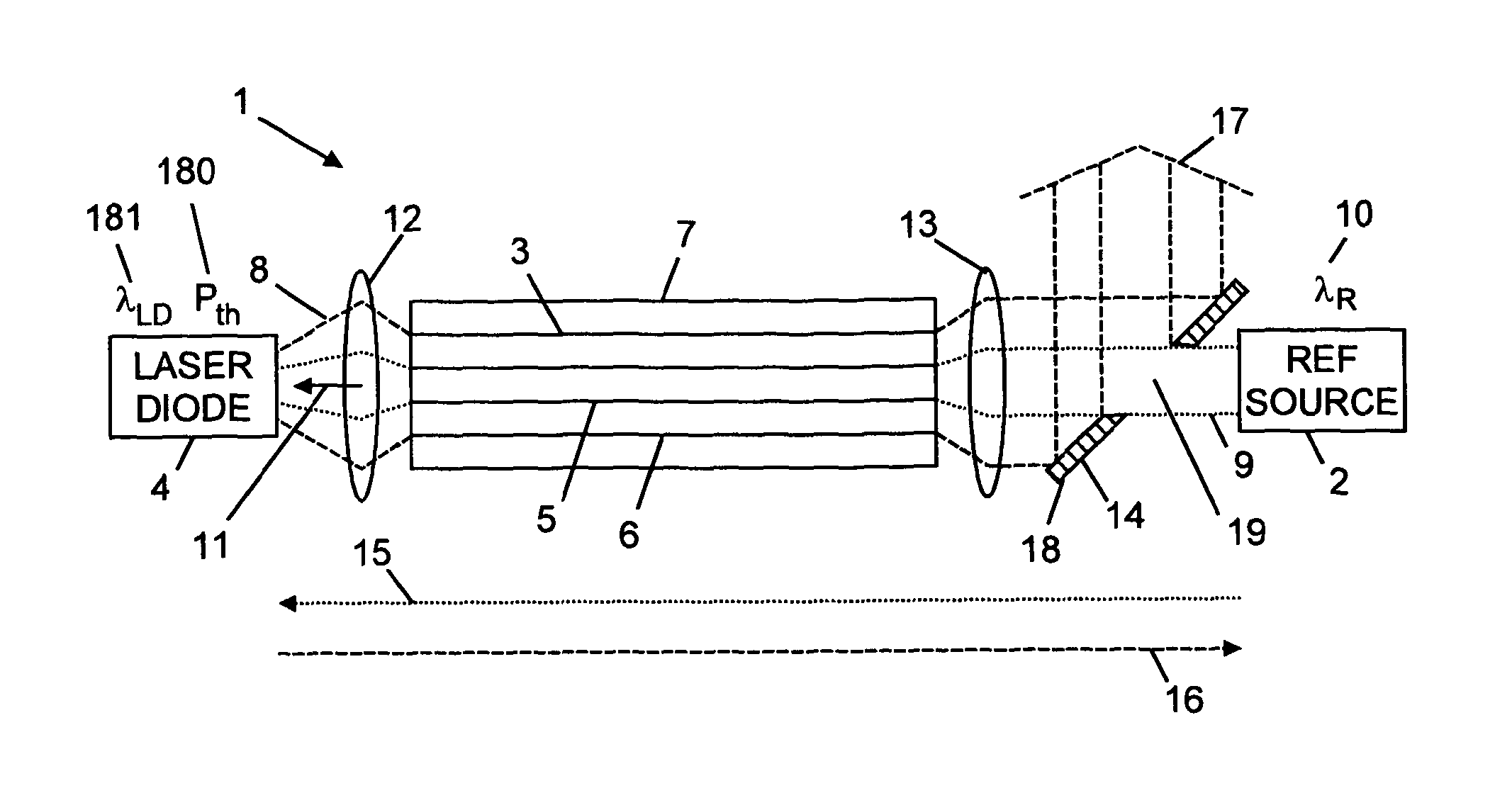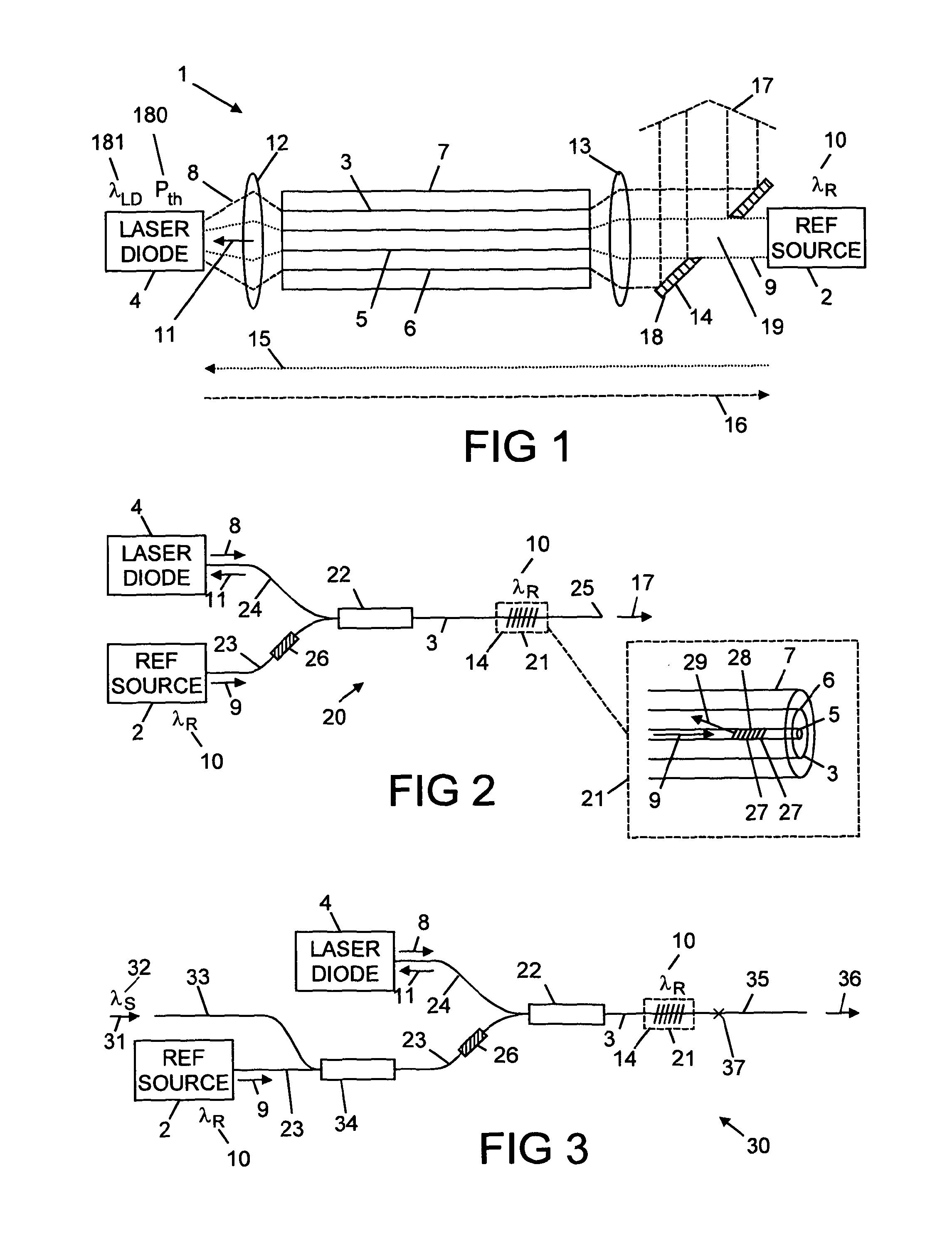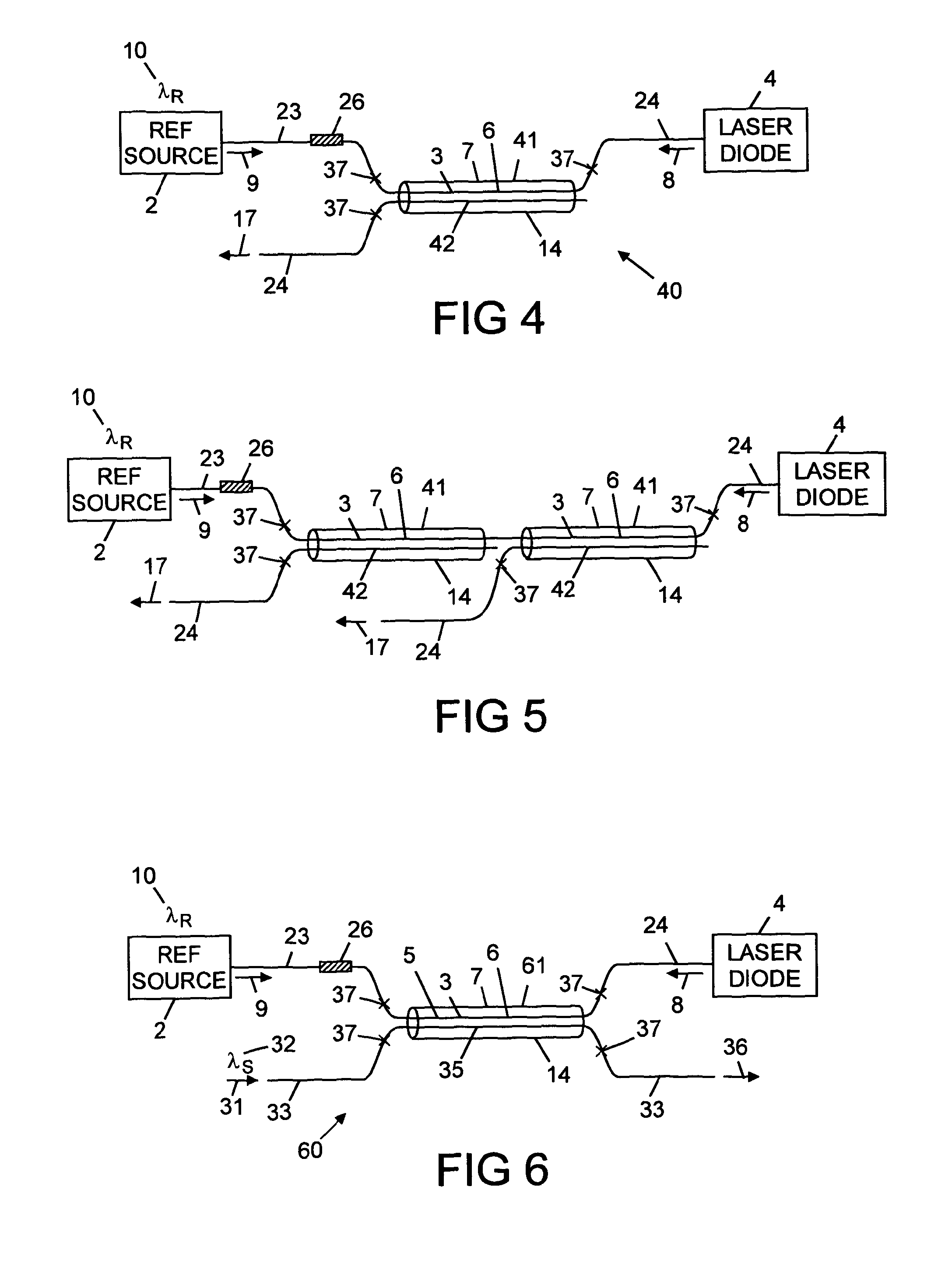Laser apparatus
a laser and laser technology, applied in the field of laser apparatus, can solve the problems of non-linear effects, optical damage to optics, and the length of fibre required to absorb pump radiation is longer than the length of a core-pumped fibre laser by a factor approximately
- Summary
- Abstract
- Description
- Claims
- Application Information
AI Technical Summary
Benefits of technology
Problems solved by technology
Method used
Image
Examples
Embodiment Construction
[0043]With reference to FIG. 1, there is shown laser apparatus 1 comprising a reference source 2, a reference fibre 3, and at least one laser diode 4, wherein the reference fibre 3 comprises a core 5 having a refractive index n1 and a first cladding 6 having a refractive index n2, the first cladding 6 is surrounded by a second cladding 7 having a refractive index n3. The refractive index n1 is greater than the refractive index n2, and the refractive index n2 is greater than the refractive index n3. The laser diode 4 emits laser radiation 8 that is guided through the first cladding 6 of the reference fibre 3. The reference source 2 emits reference radiation 9 that has a predetermined wavelength λR 10. The reference radiation 9 is guided through the core 5 of the reference fibre 3 to the laser diode 4. The reference radiation 9 that is guided through the core 5 of the reference fibre 3 to the laser diode 4 has a power 11 at the predetermined wavelength λR 10, which power 11 is greater...
PUM
 Login to View More
Login to View More Abstract
Description
Claims
Application Information
 Login to View More
Login to View More - R&D
- Intellectual Property
- Life Sciences
- Materials
- Tech Scout
- Unparalleled Data Quality
- Higher Quality Content
- 60% Fewer Hallucinations
Browse by: Latest US Patents, China's latest patents, Technical Efficacy Thesaurus, Application Domain, Technology Topic, Popular Technical Reports.
© 2025 PatSnap. All rights reserved.Legal|Privacy policy|Modern Slavery Act Transparency Statement|Sitemap|About US| Contact US: help@patsnap.com



